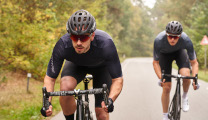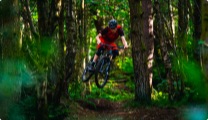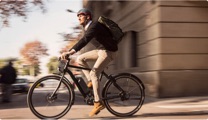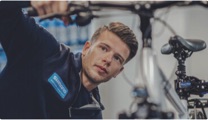Basajaun is, as you’d expect for something named after the mythical guardian of the Basque Country’s most remote forests, a 760 km gravel race that’s chock-a-block with challenges.
“Events like this ask you to be ready for anything – and by anything, I mean, literally anything!”
Pitching itself alongside Badlands as the ‘ultimate unassisted gravel event in Europe,’ Shimano Gravel Alliance rider Ibai Fradejas knew he needed to be on the startline at the inaugural edition of this 760 km race which promises 15,000 metres of climbing and a 75/25 unpaved–paved ratio.
From lush forests to arid and barren plains, the banks of the Ebro River to the rugged Sierra de la Demanda, scaling Pico San Lorenzo before cutting through the Izko Natural Park, there was no semblance of monotony throughout his 48-hour riding time.

I was riding as a mixed pair with Virginia Cancellieri, a rider from the Orbea Factory Team. We barely knew each other, having only met once before, so I knew it was a risky move. We would only have each other’s company for the entirety of the race. I know from experience how important it is to have a strong rapport with your teammate on any ride—but especially one that’s as testing as Basajaun, where you’re going to face inevitable highs and lows.
Our initial aim was to get as close as possible to Calahorra, which came at 506 kilometres into the race, without sleeping. If we could stick to my plan of riding at 13km/h (including stops), it should have taken us around 38 hours. We set off on Saturday at 08:00 and wanted to try to ride right through until 22:00 on Sunday. Once there, we’d treat ourselves to a 4–5 hour sleep before tackling the remaining 280 kilometres in one go. Our aim? To finish in exactly 3 days/72 hours.
I always say that in a test like this, you have to anticipate almost everything—but no matter how much you prepare, the thing that really counts is your ability to adapt to unforeseen events, and believe me, something will catch you out. We quickly fell off schedule, taking more rests than I’d accounted for and we didn’t reach Calahorra until 7:00 on the Monday, which was nine hours later than planned. Having already rested quite a lot, we didn’t need to stop and sleep here but there were other times when we really needed to get off the bike.
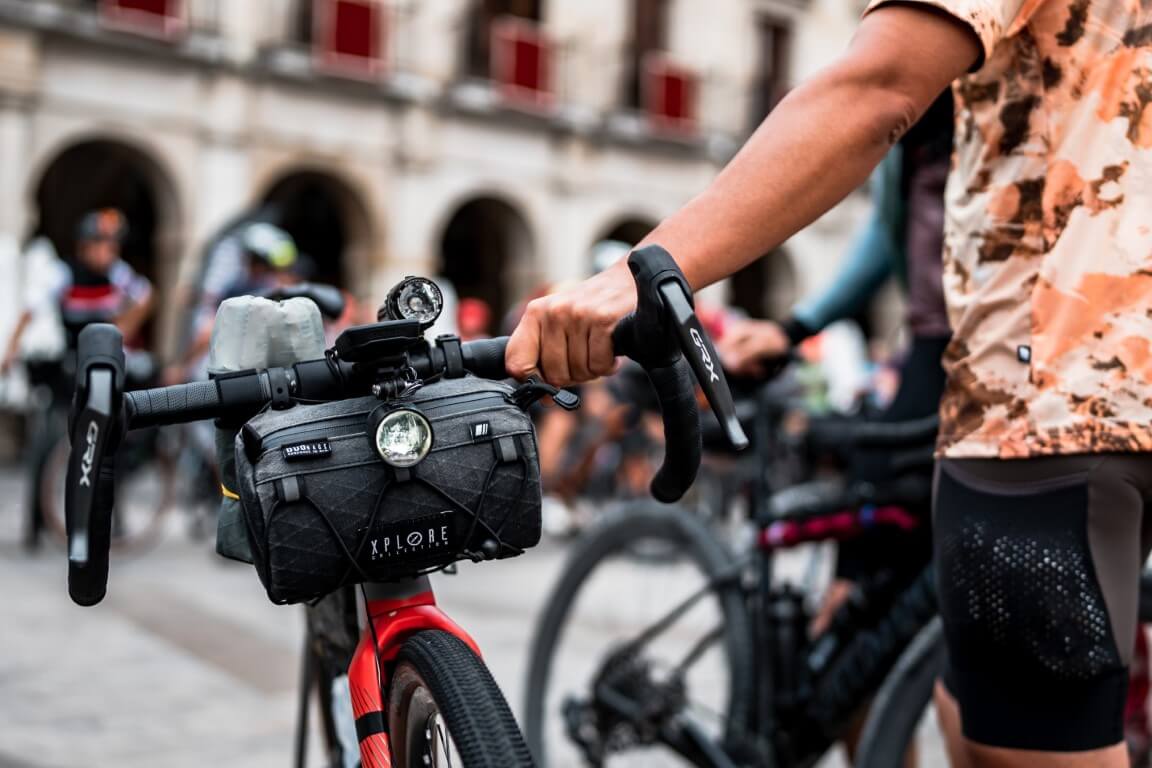
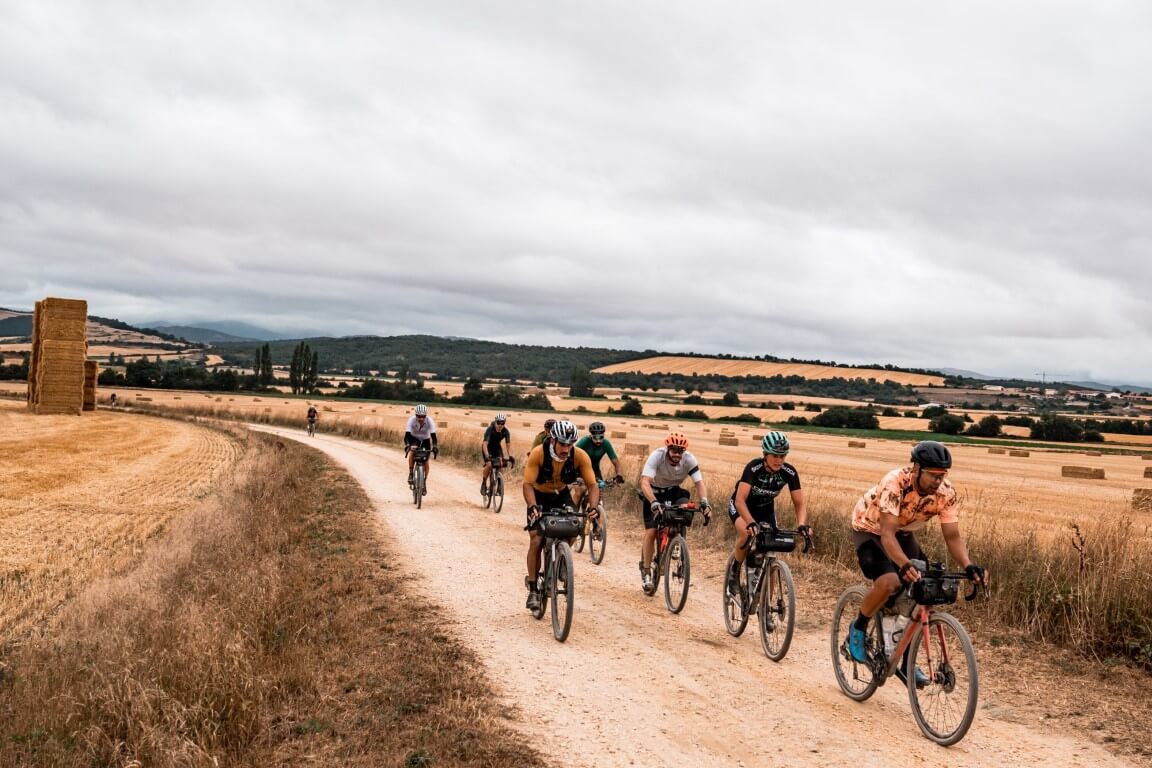
FIRST STOP, 254 KM, VILLANUEVA DE AEZKOA
We reached the town around midnight, stopping at the first bar that was open. Faster riders had already passed through so there wasn’t much food left, but the kind waitress gave us a milky coffee and a sobao, a regional sweet bread. Judging by the other sleepy riders that we spotted, it was a good place to take a proper rest, so we grabbed 90 minutes of sleep between 01:00–02.30 before deciding to push on.
SECOND STOP, 307 KM, URROZ-VILLA
The sun was just starting to come up as we bedded down for about an hour on a bench in a rest area at the entrance to the town. We’d barely done any distance since the last stop, but the fatigue had set in, and this felt necessary.
SIESTA, 417 KM, MÉLIDA
Mélida was the last town before crossing the semi-desert of the Bardenas Reales. It was 4:00 p.m. and the sun was beating down. Our bike computers told us that the mercury was above 40º C. We decided to lie down until 19:00, finding a rare bit of shade in a park and waiting for the sun go down before entering the desert. This was one of the best decisions we made – not only because we avoided the suffocating heat that caused another rider to be helicoptered out of the desert due to heat stroke, but because we enjoyed one of the most beautiful sunsets I have ever witnessed.
THIRD AND FINAL STOP, 501 KM, SAN ADRIÁN
We slept from 03:00 to 06:00 in the arcades of the town square. The real reason for this stop wasn’t necessarily fatigue – although we were definitely feeling it by now – but it was more down to the need to take off our shorts after 43 hours on the saddle.
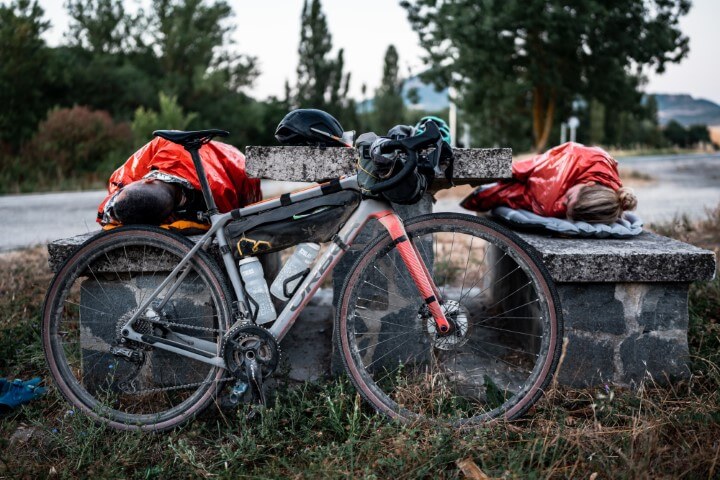
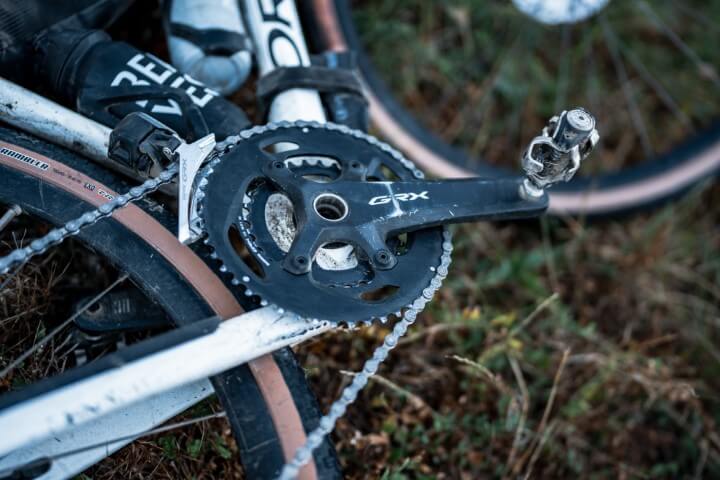
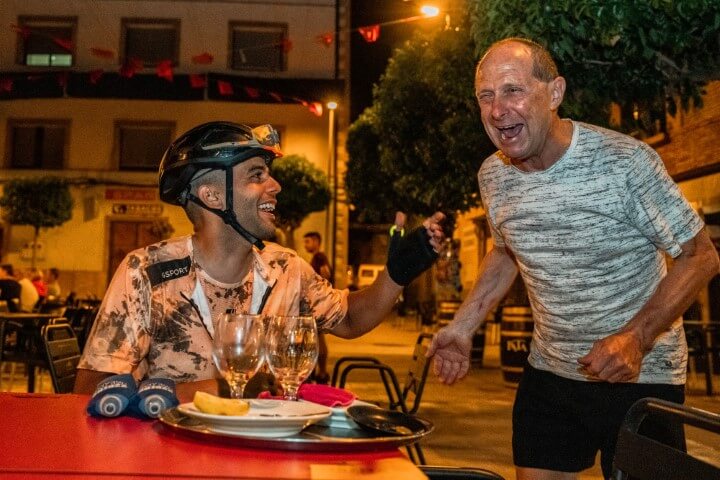

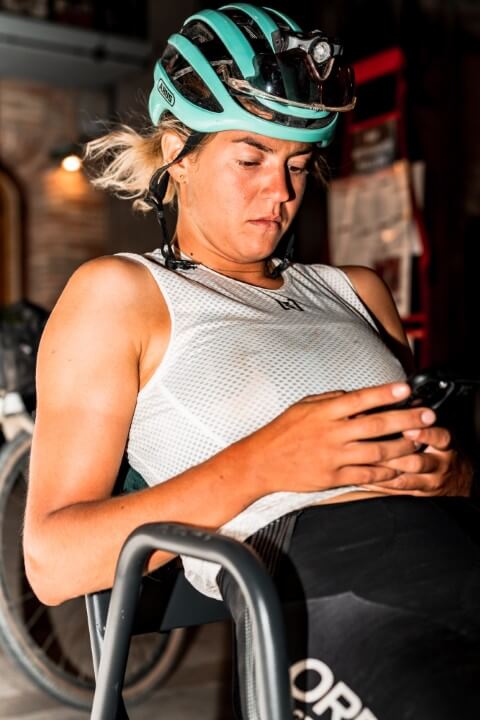
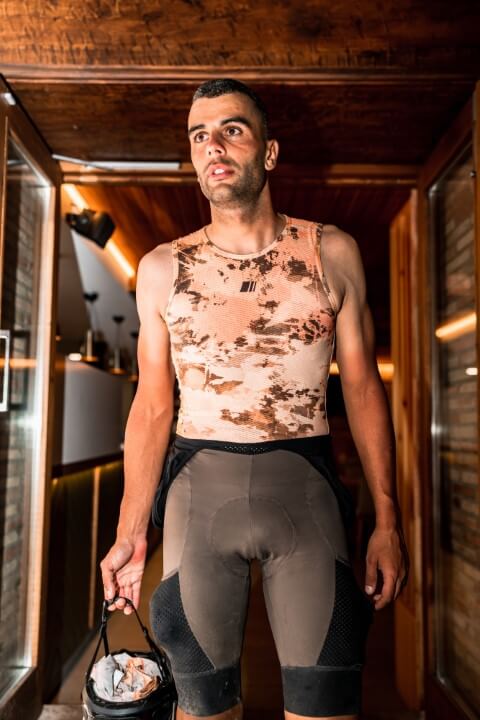
THE FINISH
We finished Basajaun as the first mixed pair in 74 hours, with a moving time of 48h 50m and an average speed of 16km/h. Only two hours slower than expected, the 3rd pair overall, and Virginia was the first woman to cross the finish line. Like any ultra-distance event, the biggest competitor at Basajaun is yourself, but I have to admit that I’m pretty proud of this result – we rode solidly throughout, taking care not to go too far into the red on the climbs or taking too many risks on the descents. The strategy worked as neither our bikes nor our bodies broke down.
I left Basajaun richer from the experience – and I’m not just referring to the finisher’s medal and map, but with a new friend. After three days in survival mode, your bond with your teammate becomes incredibly strong, no matter well you know them to begin with.
Writing this piece ten days after finishing the race, I can still feel the numbness in several fingers, but I have managed to forget the pain in my ass, the heat, the exhaustion of the hike-a-bike sections, the leg pain, the chill that descends on you just before dawn, the thirst, perpetual hunger, and sleep deprivation... Luckily I still remember the sunset in Bardenas Reales, the conversations with riders from all over the world, and the satisfaction of crossing the line with Virginia at the end...
Would I do it again? It’s the sort of experience that we all need to do at least once in a lifetime. So, yes. Sign me up.


